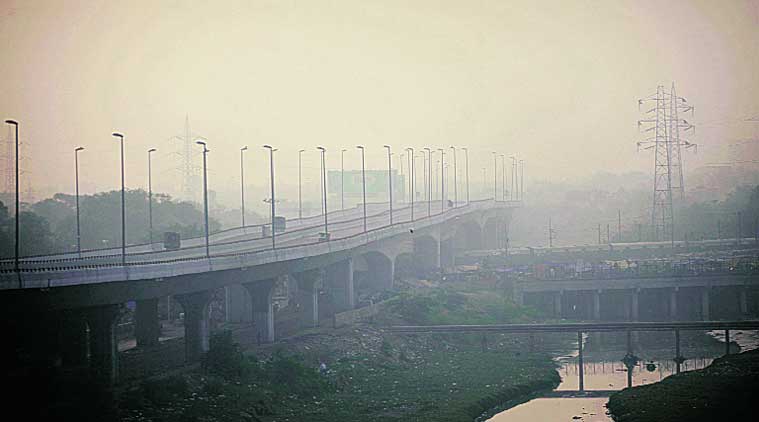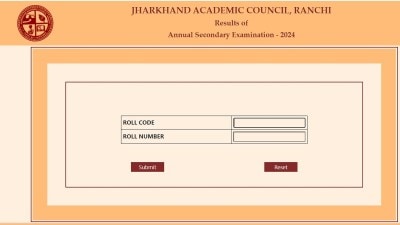- India
- International
Hold your breath, Delhi air is 16 times worse than normal
Delay in onset of winter will help clear the air faster, says pollution body official
 Smog over Barapullah flyover on Friday, a day after Diwali. (Source: Express photo by Oinam Anand)
Smog over Barapullah flyover on Friday, a day after Diwali. (Source: Express photo by Oinam Anand)
When Diwali celebrations ended, the air in Delhi was left poorer for it. Delhi Pollution Control Committee figures indicate that Thursday was one of the most polluted days in recent years. Peaks for Respirable Suspended Particulate Matter or PM 10 across Delhi were 10 to 16 times their prescribed standard.
According to the DPCC’s live monitoring, the maximum peak for PM 10 (particulate matter smaller than 10 micrometers in diameter) on Thursday was 1660 µg/m3 . The peak for PM 2.5 (smaller than 2.5 micrometers in diameter) was 999 µg/m3.
On Diwali last year, the maximum peak for PM 10 and PM 2.5 levels was significantly lower — 936 µg/m3 and 592 µg/m3, respectively.
On Thursday, the pollution level was the highest during the period between 8 pm and 11 pm. The DPCC air monitoring station at R K Puram saw the highest peak for PM 10 at 1660 µg/m3. This is 16 times the prescribed standard of 100 µg/m3.
At Anand Vihar and Punjabi Bagh, the PM 10 peak was 12 times the norm, at 1,230 µg/m3 and 1,200 µg/m3, respectively. The peak at Mandir Marg and Civil Lines followed close behind at 1,080 and 1,000 µg/m3, respectively.
The level of PM 10 has a direct impact on breathing and, according to DPCC, levels on Diwali were so high that it may lead to respiratory and cardiac complications in both the healthy and the ailing.

Experts at System for Air Quality and Weather Forecasting and Research (SAFAR) said the 24-hour average of PM 10 was recorded at an alarming 427 µg/m3. The PM 2.5 24-hour average was 278 µg/m3 against a prescribed standard of 60 µg/m3.
The PM 2.5 are fine suspended particles in the air that can cause breathing problems. This level is commonly used as a marker for pollution. The PM 2.5 level in Delhi peaked at Civil Lines — 999 µg/m3. Anand Vihar was close behind at 985 µg/m3. The PM 2.5 level at Mandir Marg, Punjabi Bagh and Civil Lines was 800 µg/m3, 716 µg/m3 and 617 µg/m3, respectively.
“Those with heart or lung disease or the aged or pregnant women are especially at risk,” a DPCC official said.
Officials said the time required for pollutants to disperse will depend on weather conditions. There is some good news. The delay in the onset of winter will help clear the air as warmer temperature helps pollutants disperse faster, the official said.
Apr 19: Latest News
- 01
- 02
- 03
- 04
- 05






































